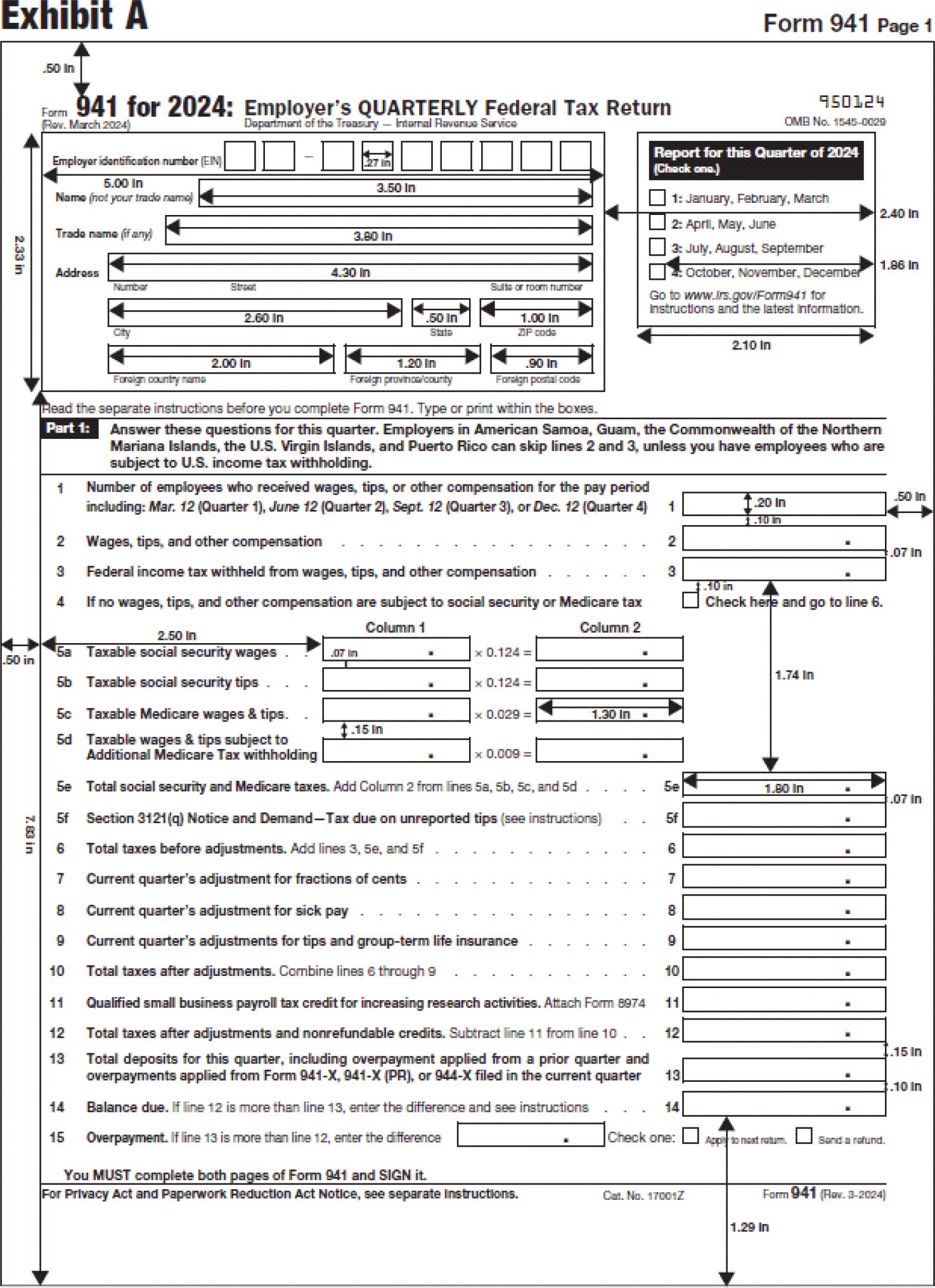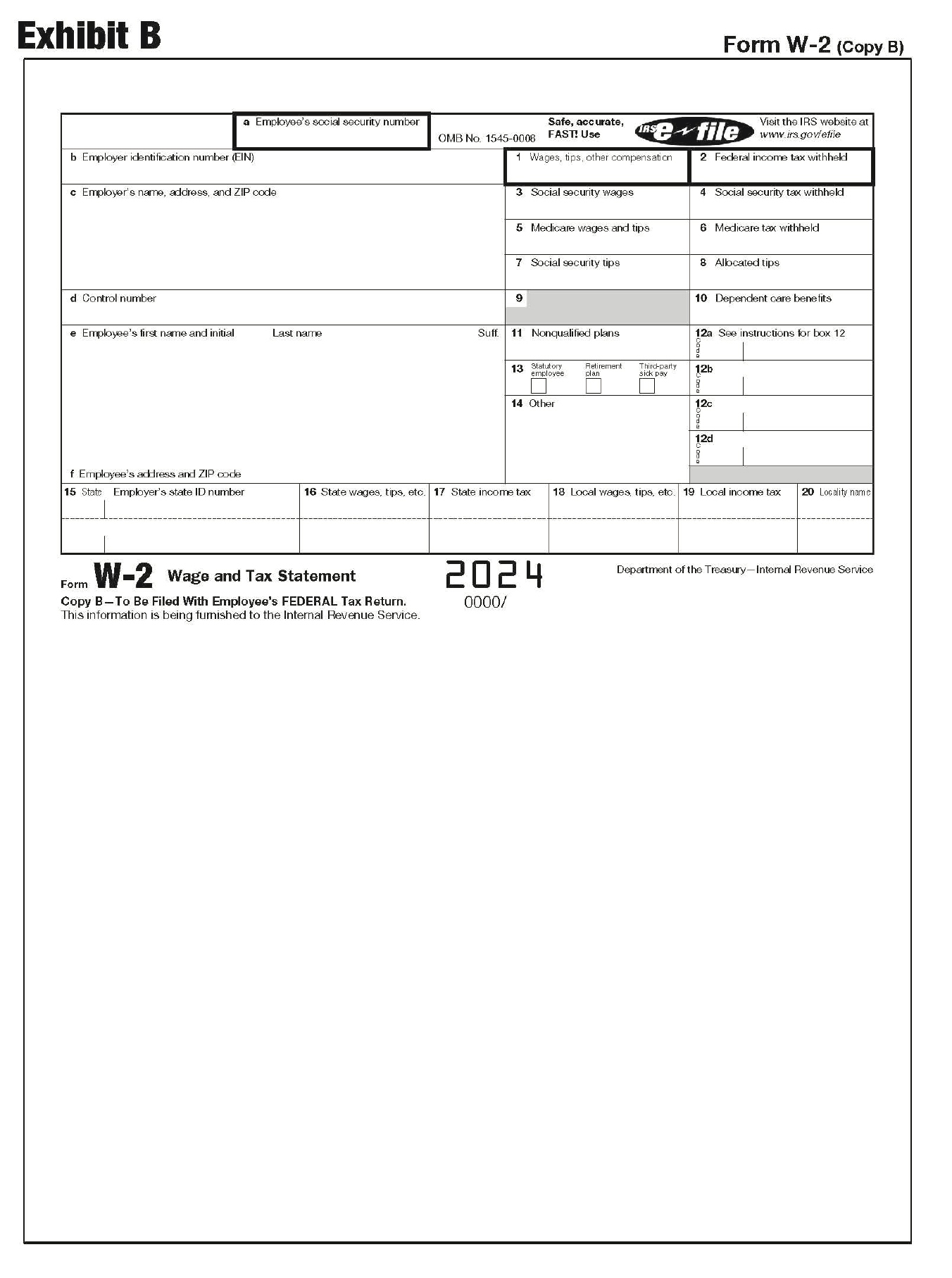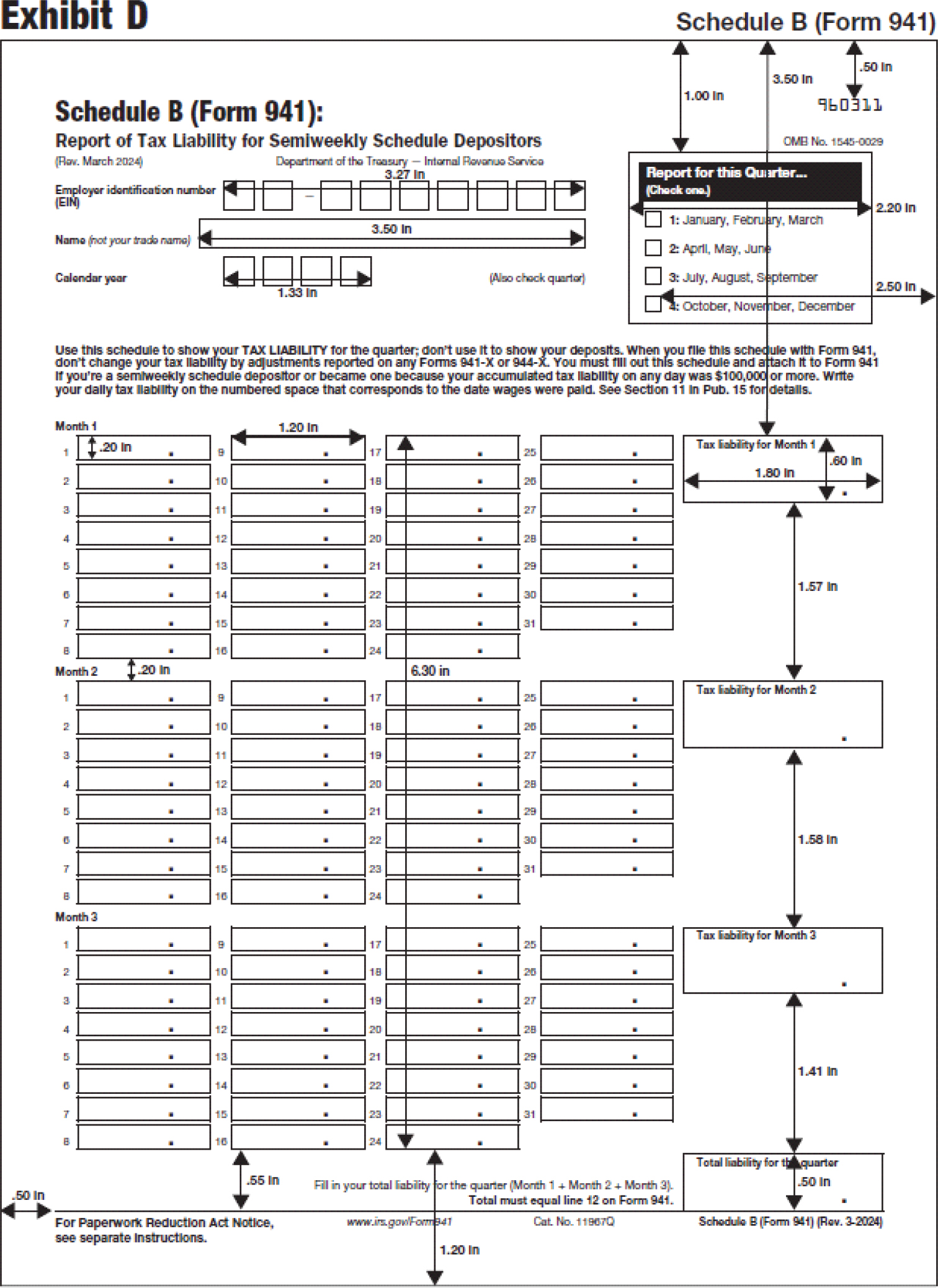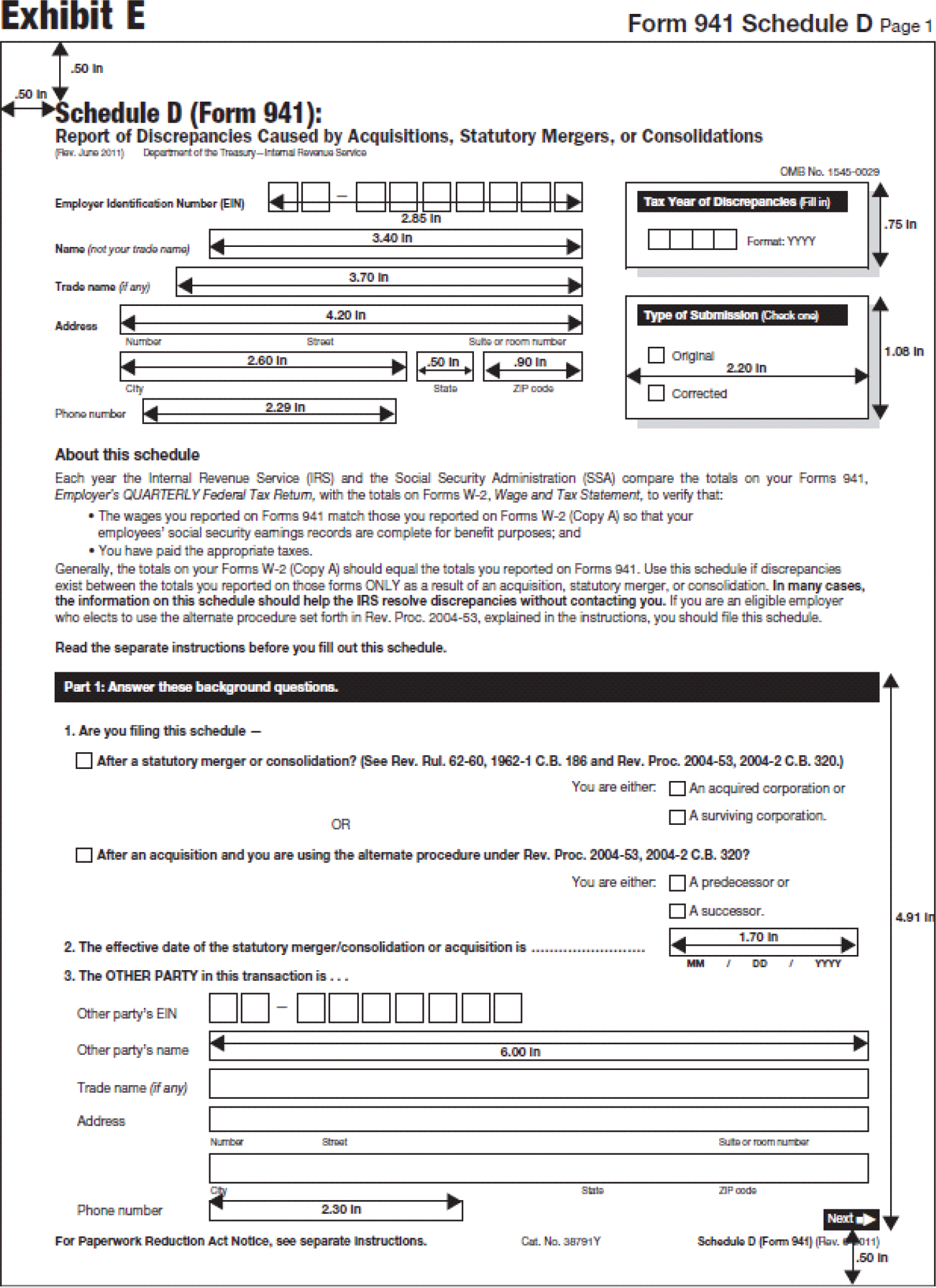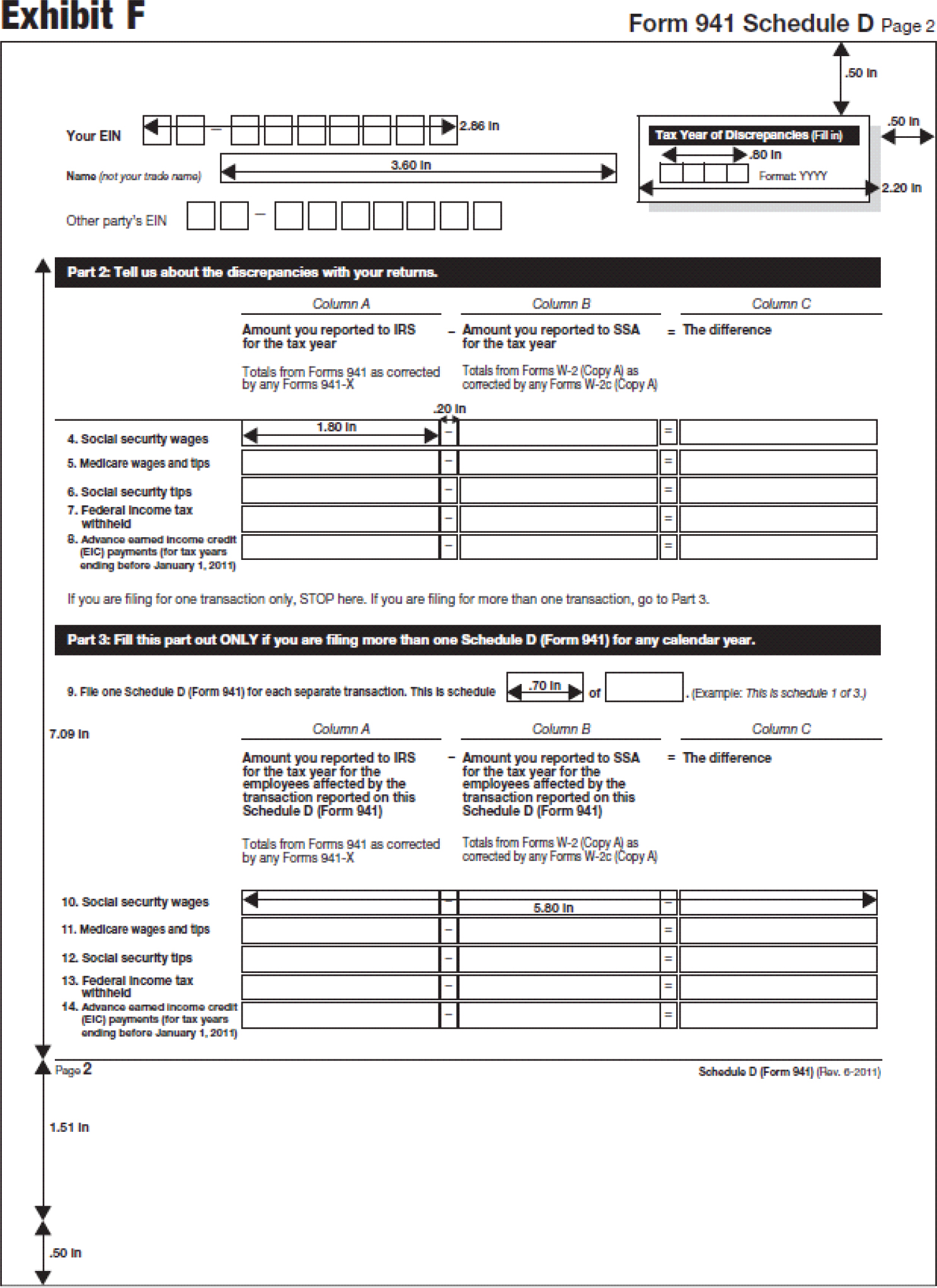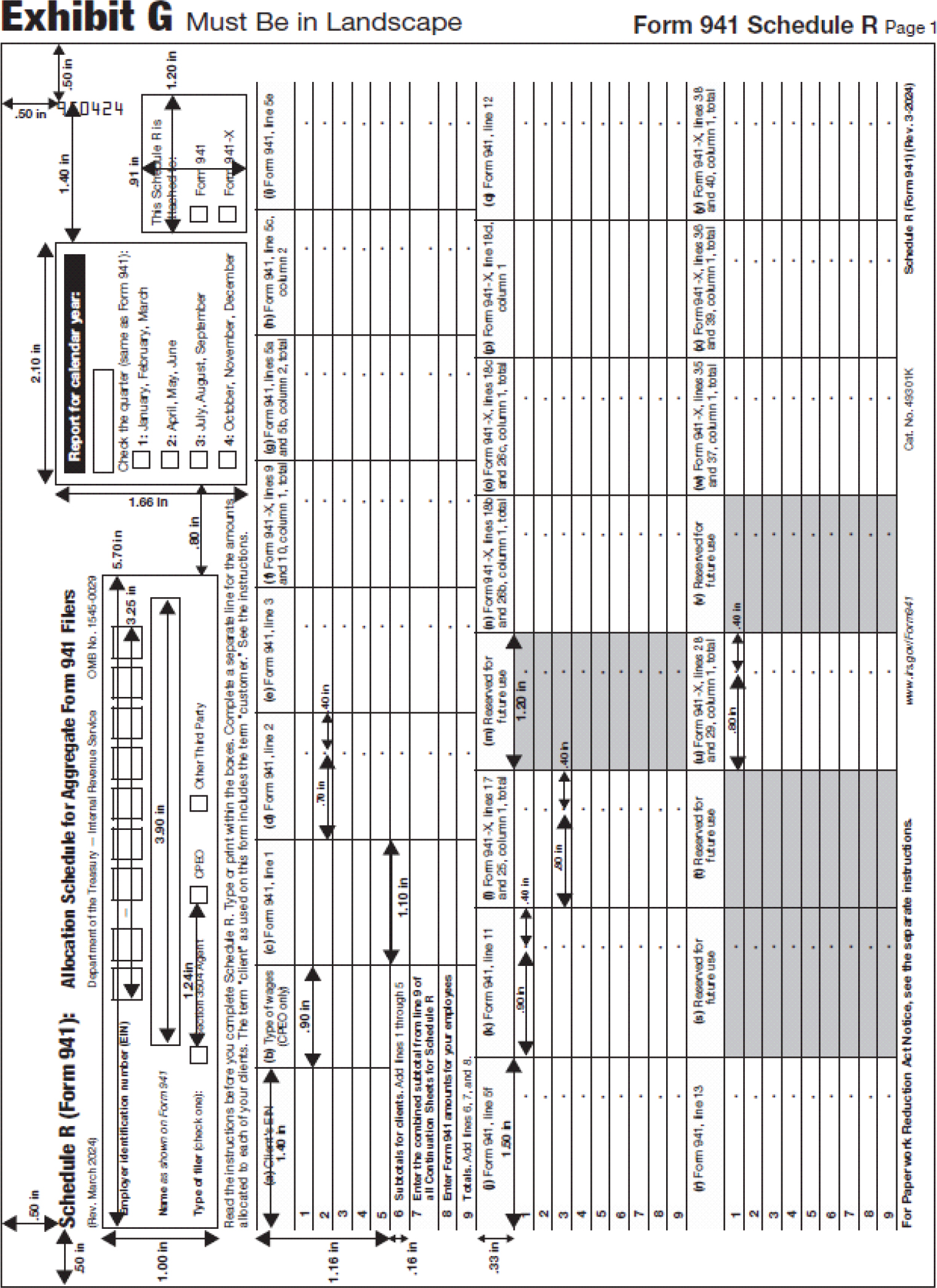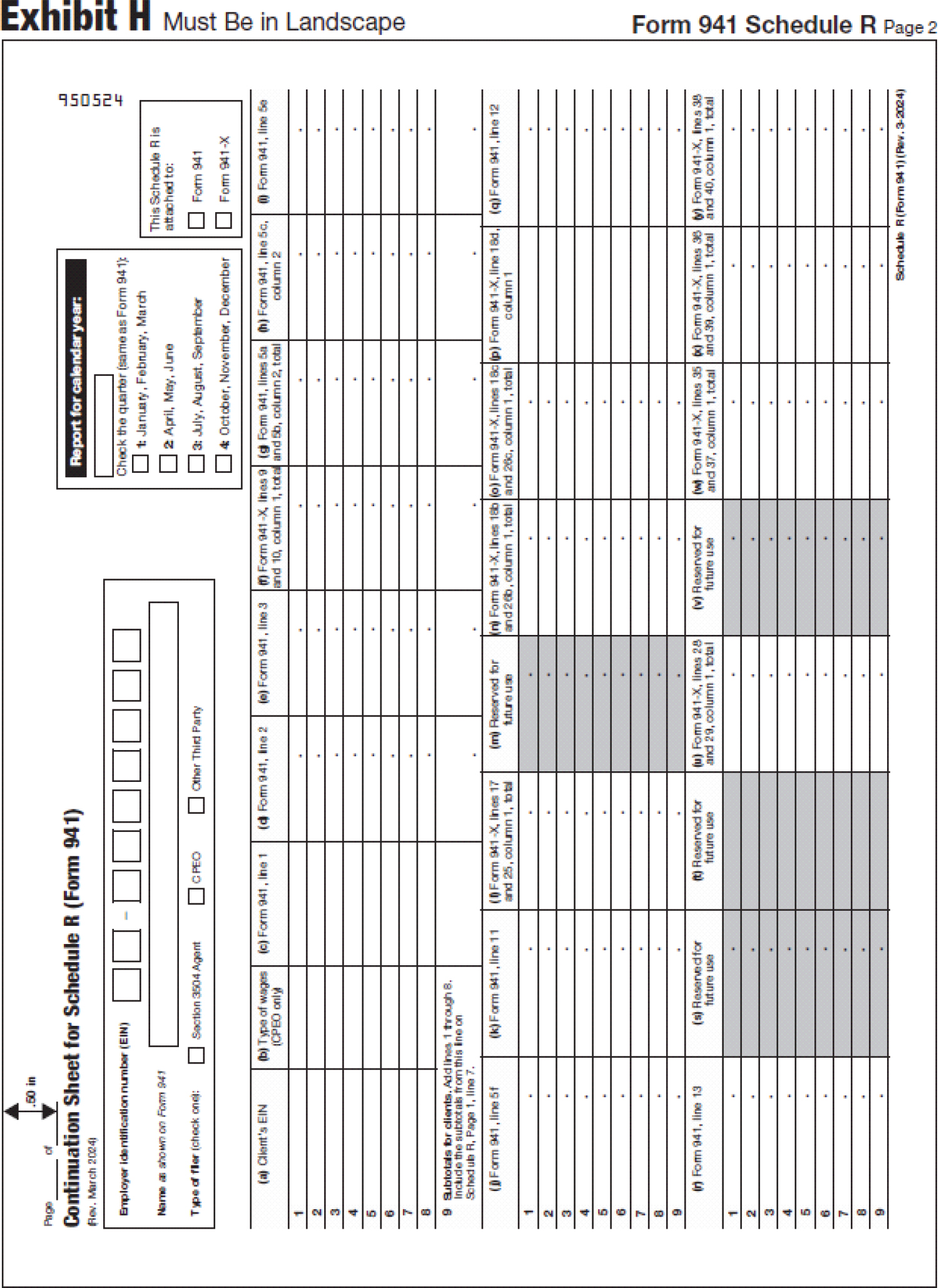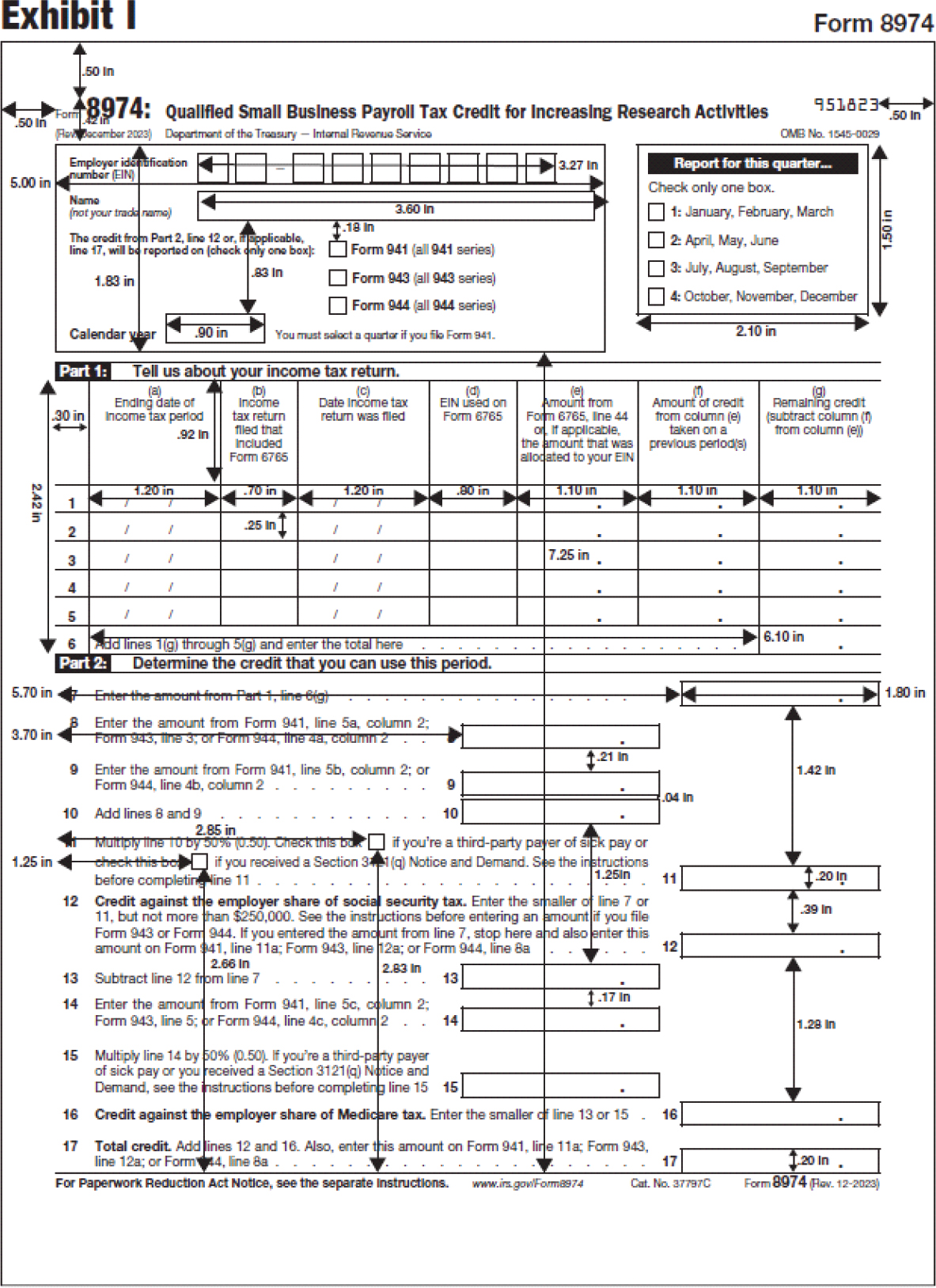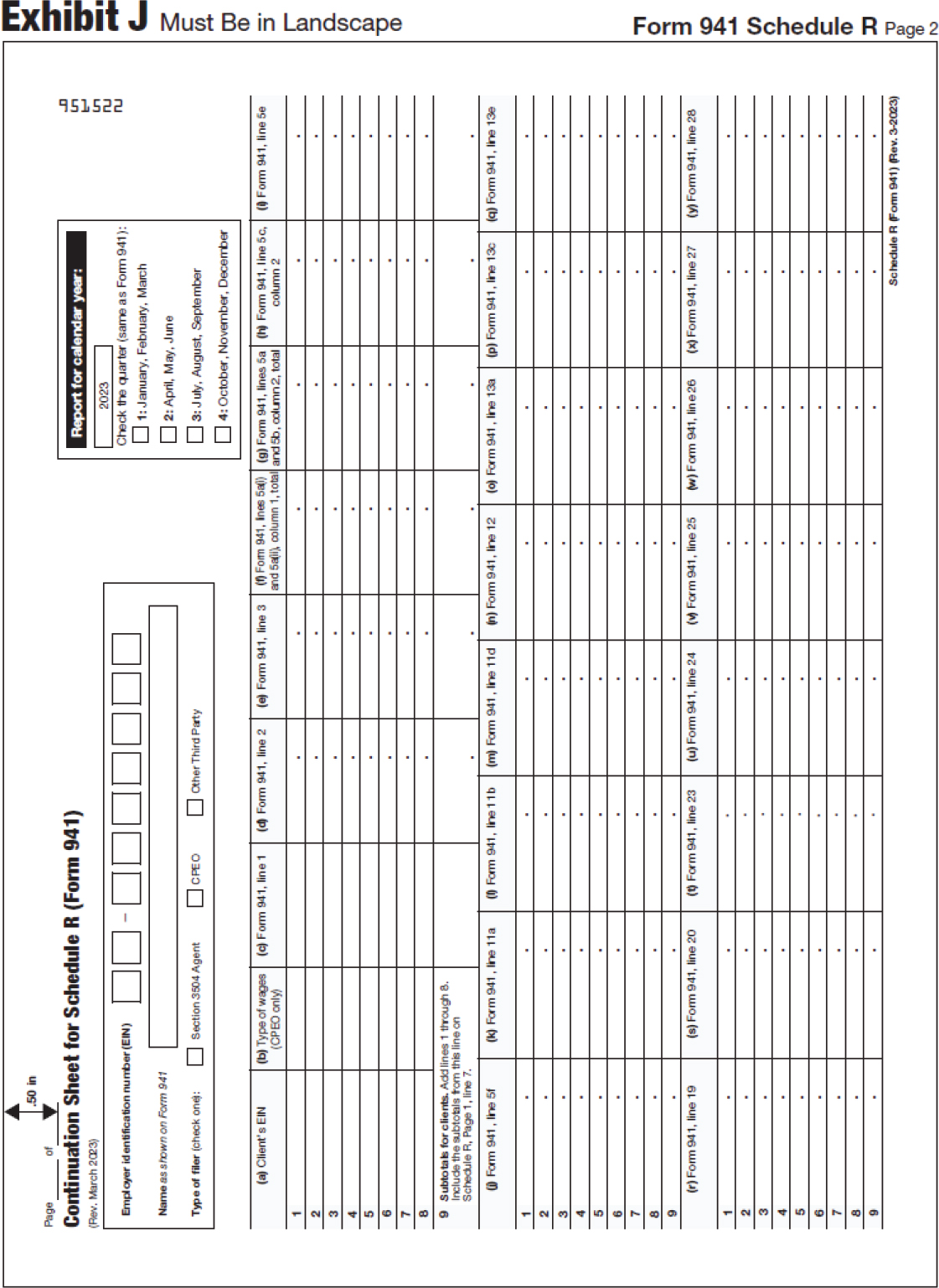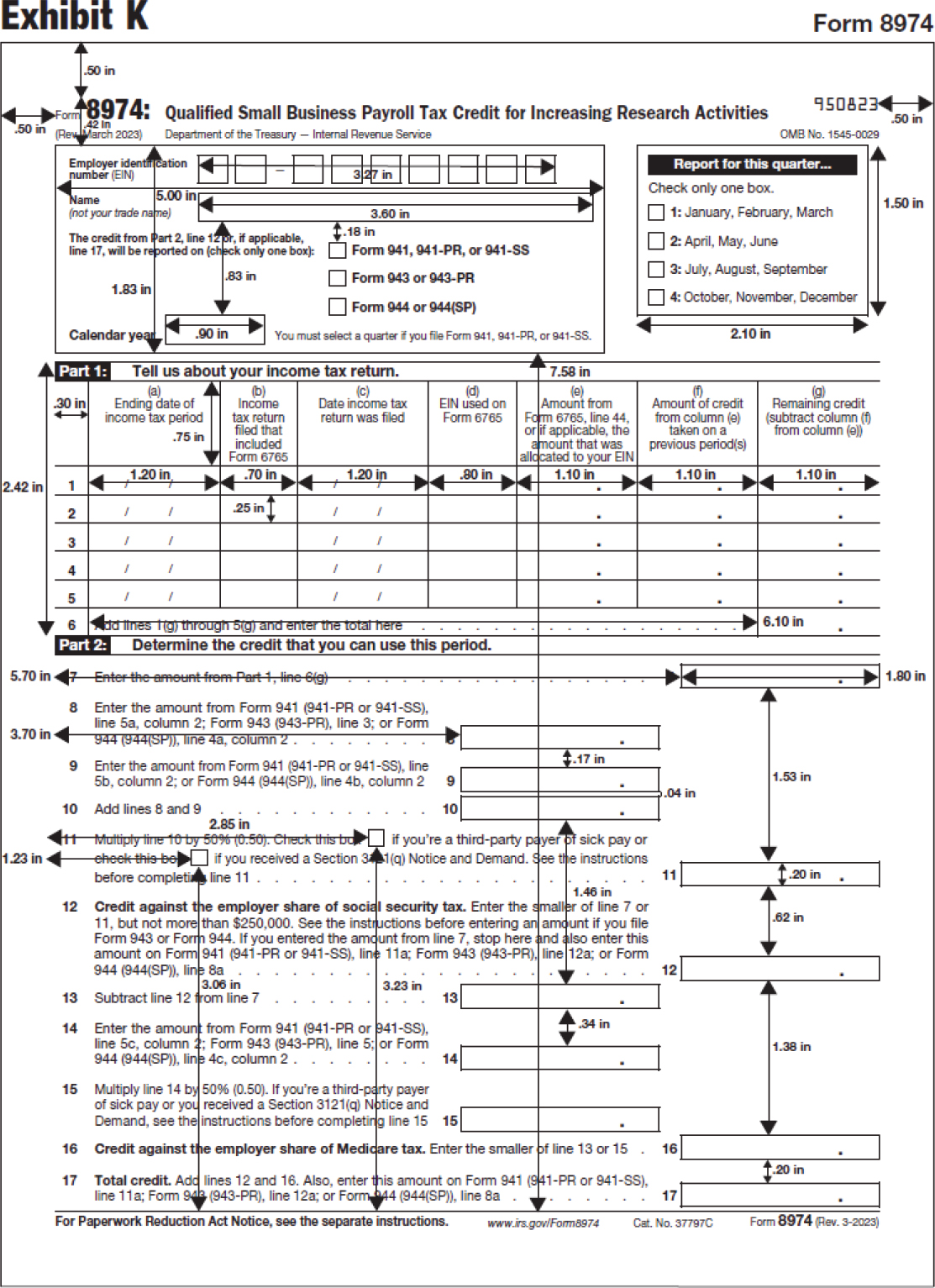Internal Revenue Bulletin: 2022-13
March 28, 2022
These synopses are intended only as aids to the reader in identifying the subject matter covered. They may not be relied upon as authoritative interpretations.
The announcement notifies taxpayers of a temporary suspension of the IRS prototype IRA opinion letter program. The announcement also advises taxpayers that, until further notice, adopters of prototype IRAs, SEPs, and SIMPLE IRA plans may rely on a previously received favorable opinion letter, and that taxpayers may use existing model forms to maintain current plans and accounts or establish new plans and accounts.
General Rules and Specifications for Substitute Form 941, Schedule B (Form 941), Schedule D (Form 941), Schedule R (Form 941), and Form 8974. This procedure provides general rules and specifications from the IRS for paper and computer-generated substitutes for Form 941; Schedule B (Form 941); Schedule D (Form 941); Schedule R (Form 941); and Form 8974. This procedure supersedes Revenue Procedure 2021-22, 2021-26 I.R.B. 1231.
NOTE. This revenue procedure will be reproduced as the next revision of IRS Publication 4436, General Rules and Specifications for Substitute Form 941, Schedule B (Form 941), Schedule D (Form 941), Schedule R (Form 941), and Form 8974.
This revenue procedure provides: (1) two tables of limitations on depreciation deductions for owners of passenger automobiles placed in service by the taxpayer during calendar year 2022; and (2) a table of dollar amounts that must be used to determine income inclusions by lessees of passenger automobiles with a lease term beginning in calendar year 2022. The tables detailing these depreciation limitations and amounts used to determine lessee income inclusions reflect the automobile price inflation adjustments required by section 280F(d)(7). For purposes of this revenue procedure, the term “passenger automobiles” includes trucks and vans.
26 CFR 601.105: Examination of returns and claims for refund, credit, or abatement; determination of correct tax liability.
(Also Part I, §§ 280F; 1.280F-7.)
Generally, U.S. citizens or resident aliens living and working abroad are taxed on their worldwide income. However, if their tax home is in a foreign country and they meet either the bona fide residence test or the physical presence test, they can choose to exclude from their income a limited amount of their foreign earned income ($108,700 for 2021). Both the bona fide residence test and the physical presence test contain minimum time requirements. Revenue Procedure 2022-18 provides a waiver under section 911(d)(4) for the time requirements for individuals electing to exclude their foreign earned income who must leave a foreign country because of war, civil unrest, or similar adverse conditions in that country. Rev. Proc. 2022-18 adds Iraq, Burma, Chad, Afghanistan, and Ethiopia to the list of waiver countries for tax year 2021 for which the minimum time requirements are waived.
26 CFR 1.911-2: Qualified Individuals.
(Also: Part I, § 911.)
Provide America’s taxpayers top-quality service by helping them understand and meet their tax responsibilities and enforce the law with integrity and fairness to all.
The Internal Revenue Bulletin is the authoritative instrument of the Commissioner of Internal Revenue for announcing official rulings and procedures of the Internal Revenue Service and for publishing Treasury Decisions, Executive Orders, Tax Conventions, legislation, court decisions, and other items of general interest. It is published weekly.
It is the policy of the Service to publish in the Bulletin all substantive rulings necessary to promote a uniform application of the tax laws, including all rulings that supersede, revoke, modify, or amend any of those previously published in the Bulletin. All published rulings apply retroactively unless otherwise indicated. Procedures relating solely to matters of internal management are not published; however, statements of internal practices and procedures that affect the rights and duties of taxpayers are published.
Revenue rulings represent the conclusions of the Service on the application of the law to the pivotal facts stated in the revenue ruling. In those based on positions taken in rulings to taxpayers or technical advice to Service field offices, identifying details and information of a confidential nature are deleted to prevent unwarranted invasions of privacy and to comply with statutory requirements.
Rulings and procedures reported in the Bulletin do not have the force and effect of Treasury Department Regulations, but they may be used as precedents. Unpublished rulings will not be relied on, used, or cited as precedents by Service personnel in the disposition of other cases. In applying published rulings and procedures, the effect of subsequent legislation, regulations, court decisions, rulings, and procedures must be considered, and Service personnel and others concerned are cautioned against reaching the same conclusions in other cases unless the facts and circumstances are substantially the same.
The Bulletin is divided into four parts as follows:
Part I.—1986 Code. This part includes rulings and decisions based on provisions of the Internal Revenue Code of 1986.
Part II.—Treaties and Tax Legislation. This part is divided into two subparts as follows: Subpart A, Tax Conventions and Other Related Items, and Subpart B, Legislation and Related Committee Reports.
Part III.—Administrative, Procedural, and Miscellaneous. To the extent practicable, pertinent cross references to these subjects are contained in the other Parts and Subparts. Also included in this part are Bank Secrecy Act Administrative Rulings. Bank Secrecy Act Administrative Rulings are issued by the Department of the Treasury’s Office of the Assistant Secretary (Enforcement).
Part IV.—Items of General Interest. This part includes notices of proposed rulemakings, disbarment and suspension lists, and announcements.
The last Bulletin for each month includes a cumulative index for the matters published during the preceding months. These monthly indexes are cumulated on a semiannual basis, and are published in the last Bulletin of each semiannual period.
| PART 1 – | |
|---|---|
| Section 1.1 – Purpose | 909 |
| Section 1.2 – What’s New | 910 |
| Section 1.3 – Reminders | 911 |
| Section 1.4 – General Requirements for Reproducing IRS Official Form 941, Schedule B, Schedule D, Schedule R, and Form 8974 | 911 |
| Section 1.5 – Reproducing Form 941, Schedule B, Schedule D, Schedule R, and Form 8974 for Software-Generated Paper Forms | 913 |
| Section 1.6 – Specific Instructions for Schedule D | 914 |
| Section 1.7 – Specific Instructions for Schedule R | 915 |
| Section 1.8 – Specific Instructions for Form 8974 | 916 |
| Section 1.9 – Office of Management and Budget (OMB) Requirements for Substitute Forms | 916 |
| Section 1.10 – Order Forms and Instructions | 917 |
| Section 1.11 – Effect on Other Documents | 917 |
| Section 1.12 – Helpful Information | 917 |
| Section 1.13 – Exhibits | 918 |
.01 The purpose of this revenue procedure is to provide general rules and specifications from the IRS for paper and computer-generated substitutes for Form 941, Employer’s QUARTERLY Federal Tax Return; Schedule B (Form 941), Report of Tax Liability for Semiweekly Schedule Depositors (referred to in this revenue procedure as “Schedule B”); Schedule D (Form 941), Report of Discrepancies Caused by Acquisitions, Statutory Mergers, or Consolidations (referred to in this revenue procedure as “Schedule D”); Schedule R (Form 941), Allocation Schedule for Aggregate Form 941 Filers (referred to in this revenue procedure as “Schedule R”); and Form 8974, Qualified Small Business Payroll Tax Credit for Increasing Research Activities.
Caution. Before creating a substitute Form 941, see Pub. 1167, General Rules and Specifications for Substitute Forms and Schedules, for additional rules and specifications for payment vouchers (Vouchers), printing in margins (Marginal Printing), and additional instructions (Additional Instructions for All Forms).
Note. Substitute territorial forms (941-PR, Planilla para la Declaración Federal TRIMESTRAL del Patrono; 941-SS, Employer’s QUARTERLY Federal Tax Return (American Samoa, Guam, the Commonwealth of the Northern Mariana Islands, and the U.S. Virgin Islands); and Anexo B (Formulario 941-PR), Registro de la Obligación Contributiva para los Despositantes de Itinerario Bisemanal), should also conform to the specifications outlined in this revenue procedure.
.02 This revenue procedure provides information for substitute Form 941, Schedule B, Schedule D, Schedule R, and Form 8974. If you need more in-depth information on who must complete these forms and how to complete them, see the Instructions for Form 941, the Instructions for Schedule B, the Instructions for Schedule D, the Instructions for Schedule R, the Instructions for Form 8974, and Pub. 15, Employer’s Tax Guide, or visit IRS.gov.
Note. Failure to produce acceptable substitutes of the forms and schedules listed in this revenue procedure may result in delays in processing. This may result in penalties.
.03 Forms that completely follow the guidelines in this revenue procedure and are exact replicas of the official IRS forms do not need to be submitted to the IRS for specific approval. Substitute forms and schedules need to be scanned using IRS scanning equipment.
If you are uncertain of any specification and want clarification, do the following.
-
Submit a letter citing the specification.
-
State your understanding of the specification.
-
Enclose an example (if appropriate) of how the form would appear if produced using your understanding.
-
Be sure to include your name, complete address, phone number, and, if applicable, your email address with your correspondence. Send your request to SCRIPS@IRS.gov or SubstituteForms@IRS.gov, or use the following address.
Internal Revenue Service
Attn: Substitute Forms Program
SE:W:CAR:MP:P:TP
1111 Constitution Ave. NW, Room 6554
Washington, DC 20224
Note. Allow at least 30 days for the IRS to respond.
.04 However, software developers and form producers should send a blank copy of their substitute Form 941, Schedule B, and Schedule R in Portable Document Format (PDF) to SCRIPS@IRS.gov. The purpose is not specifically for approval but to assist the IRS in preparing to scan these forms. Submitters will only receive comments if a significant problem is discovered through this process. Submitters are not expected to delay marketing their forms in order to receive feedback. Submitters must not include any “live” taxpayer data on any substitute form submitted for review.
.05 Form 941, Schedule B, Schedule R, and Form 8974 have a six-digit form ID code in the upper right hand corner. The first two digits of the form ID code represent whether the form is an official paper form or a substitute 6x10 grid. The third and fourth digits of the form ID code are a unique identifier that is subject to change each quarter when changes are made to a page of the form. The fifth and six digits of the form ID code generally represent the year in which the IRS made major formatting changes to the layout of a page of the form. The following six-digit form ID codes, some of which have been updated for the first quarter of 2022, are currently used on Form 941, Schedule B, Schedule R, and Form 8974.
-
Official paper forms: 950122 (Form 941, page 1); 950222 (Form 941, page 2); 950922 (Form 941, page 3); 951020 (Form 941, page 4); 960311 (Schedule B); 950422 (Schedule R, page 1); 950522 (Schedule R, page 2); and 950817 (Form 8974).
-
Substitute 6x10 grids: 970122 (Form 941, page 1); 970222 (Form 941, page 2); 970922 (Form 941, page 3); 971020 (Form 941, page 4); 970311 (Schedule B); 970422 (Schedule R, page 1); 970522 (Schedule R, page 2); and 970817 (Form 8974).
You must always use the form ID code provided on the current form for the applicable quarter for which you are creating a substitute form, even if this revenue procedure is not superseded to reflect a change to a form ID code.
Note. Page 4 of Form 941 (page intentionally left blank) is not required to be filed with the IRS as part of a substitute Form 941. However, if page 4 of the substitute Form 941 is filed, it must include the form ID code.
.06 This revenue procedure will be updated only if there are major formatting changes to the layout of the forms (that is, changes to the measurements provided in the exhibits at the end of this revenue procedure) or there are other changes that impact the processing of substitute forms. This revenue procedure won’t be updated solely because a line is changed to “Reserved for future use” or solely because a form ID code changes without major formatting changes.
Form 941 and Schedule R were revised for the first quarter of 2022 due to the expiration of the COVID-19 related employee retention credit. See the instructions for these forms at IRS.gov/Form941 for more information about the changes.
.01 Submit substitute Form 941, Schedule B, Schedule D, Schedule R, and Form 8974 to the IRS for specifications review. Substitute Form 941, Schedule B, Schedule D, Schedule R, and Form 8974 that completely conform to the specifications contained in this revenue procedure do not require prior approval from the IRS, but should be submitted to SCRIPS@IRS.gov to ensure that they conform to IRS format and scanning specifications.
.02 Print the form on standard 8.5-inch wide by 11-inch paper.
.03 Use white paper that meets generally accepted weight, color, and quality standards (minimum 20 lb. white bond paper).
Note. Reclaimed fiber in any percentage is permitted provided that the requirements of this standard are met.
.04 The IRS prefers printing Form 941 on both sides of a single sheet of paper, but it is acceptable to print on one side of each of two separate sheets of paper.
.05 Make the substitute paper form as identical to the official form as possible.
.06 Print the substitute form using nonreflective black (not blue or other-colored) ink. Printing in an ink color other than black may reduce readability in the scanning process. This may result in figures being too faint to be recognizable.
.07 Use typefaces that are substantially identical in size and shape to the official form and use rules and shading (if used) that are substantially identical to those on the official form. Use font size as large as possible within the fields.
.08 In the same location as shown on the official IRS forms, print the six-digit form ID code (if one exists on the official form) on each form using nonreflective black, carbon-based, 12-point font. The use of non-OCR-A font may reduce readability for scanning. Use the official form to develop your substitute form.
Note. Maintain as much white space as possible around the form ID code. Do not allow character strings to print adjacent to the code.
The following six-digit form ID codes are used on Form 941, Schedule B, Schedule R, and Form 8974 for the first quarter of 2022. Print “950122” on Form 941, page 1; “950222” on Form 941, page 2; “950922” on Form 941, page 3; “951020” on Form 941, page 4; “960311” on Schedule B; “950422” on Schedule R, page 1; “950522” on Schedule R, page 2; and “950817” on Form 8974. You must always use the form ID code provided on the current form for the applicable quarter for which you are creating a substitute form, even if this revenue procedure is not superseded to reflect a change to a form ID code. See Section 1.5 for information on form ID codes for software-generated forms.
Note. Page 4 of Form 941 (page intentionally left blank) is not required to be filed with the IRS as part of a substitute Form 941. However, if page 4 of the substitute Form 941 is filed, it must include the form ID code.
.09 Print the OMB number in the same location as on the official form. Be sure to include the OMB number on Form 941, Schedule B, Schedule D, Schedule R, and Form 8974.
.10 Print all entry boxes and checkboxes exactly as shown (location and size) on the official forms.
Note. Instead of a four-sided checkbox for the entry, just the bottom line of the box can be used as long as the location and size remain the same.
.11 Print “For Privacy Act and Paperwork Reduction Act Notice, see the back of the Payment Voucher.” at the bottom of page 1 of Form 941.
.12 Print “For Paperwork Reduction Act Notice, see separate instructions.” at the bottom of Schedule B and Schedule D.
.13 Print “For Paperwork Reduction Act Notice, see the separate instructions.” at the bottom of Schedule R.
.14 Print “For Paperwork Reduction Act Notice, see the separate instructions.” at the bottom of Form 8974.
.15 Do not print the form catalog number (“Cat. No.”) at the bottom of the forms or instructions. Instead, print your IRS-issued three-letter substitute form source code in place of the catalog number on the left at the bottom of page 1 of Form 941, Schedule B, Schedule D, Schedule R, and Form 8974.
Note. You can obtain a three-letter substitute form source code by requesting it by email at SubstituteForms@IRS.gov. Please enter “Substitute Forms” on the subject line.
.16 Do not print the Government Printing Office (GPO) symbol at the bottom of the forms or instructions.
.01 You may use the PDF files to develop the layout for your forms. Draft forms found at IRS.gov/DraftForms can be used to develop interim formats until the forms are finalized. When forms become finalized, they are posted and can be found at IRS.gov/Forms. You may use 6x10 grid formats to develop software versions of Form 941, Schedule B, Schedule D, Schedule R, and Form 8974.
Please follow the specifications exactly to develop the fields.
.02 If you are developing software using the 6x10 grid, the following six-digit form ID codes are used on Form 941, Schedule B, Schedule R, and Form 8974 for the first quarter of 2022.
-
“970122” for Form 941, page 1; “970222” for Form 941, page 2; “970922” for Form 941, page 3; “971020” for Form 941, page 4; “970311” for Schedule B; “970422” for Schedule R, page 1; “970522” for Schedule R, page 2; and “970817” for Form 8974.
You must always use the form ID code provided on the current form, with the first two digits changed to “97” when using a 6x10 grid, for the applicable quarter for which you are creating a substitute form, even if this revenue procedure is not superseded to reflect a change to a form ID code.
Note. Maintain as much white space as possible around the form ID code. Do not allow character strings to print adjacent to the code.
-
Place all 6x10 grid boxes and entry spaces in the same field locations as indicated on the official forms.
-
Use single lines for “Employer Identification Number (EIN)” and other entry areas in the entity section of Form 941, pages 1, 2, and 3; Schedule B; Schedule R, pages 1 and 2; and Form 8974.
-
Reverse type is not needed as shown on the official form.
-
Do not pre-print decimal points in the data boxes. However, where the amounts are required, the amounts should be printed with decimal points and place holders for cents.
-
Delete the pre-printed formatting in any “date” boxes.
-
Use a single box for “Personal Identification Number (PIN)” on Form 941.
-
You may delete all shading when using the 6x10 grid format.
.03 If producing both the form and the data or the form only, print your three-letter source code at the bottom of Form 941, page 1; Schedule B; Schedule D; Schedule R, page 1; or Form 8974. See Section 1.4.15.
.04 If producing only the data on the form, print your four-digit software industry vendor code on Form 941. The four-digit vendor code preceded by four zeros and a slash (0000/9876) must be pre-printed. If you have a valid vendor code issued to you through the National Association of Computerized Tax Processors (NACTP), you should use that code. If you do not have a valid vendor code, contact the NACTP via email at president@nactp.org for information on these codes.
.05 Print “For Privacy Act and Paperwork Reduction Act Notice, see the back of the Payment Voucher.” at the bottom of Form 941, page 1.
.06 Print “For Paperwork Reduction Act Notice, see separate instructions.” at the bottom of Schedule B and Schedule D.
.07 Print “For Paperwork Reduction Act Notice, see the separate instructions.” at the bottom of Schedule R, page 1.
.08 Print “For Paperwork Reduction Act Notice, see the separate instructions.” at the bottom of Form 8974.
.09 Be sure to print the OMB number in the same location as on the official forms on substitute Form 941, Schedule B, Schedule D, Schedule R, and Form 8974.
.10 Do not print the form catalog number (“Cat. No.”) at the bottom of the forms or instructions.
.11 Do not print the Government Printing Office (GPO) symbol at the bottom of the forms or instructions.
.12 To ensure accurate scanning and processing, enter data on Form 941, Schedule B, Schedule D, Schedule R, and Form 8974 as follows.
-
Display/print the name and EIN on all pages and attachments in the proper associated fields.
-
Use 12-point (minimum 10-point) Courier font (where possible).
-
Omit dollar signs. Commas are optional.
-
Except for Form 941, lines 1, 2, and 12, leave blank any data field with a value of zero.
-
Enter negative amounts with a minus sign. For example, report “-10.59” instead of “(10.59).”
Note. The IRS prefers that you use a minus sign for negative amounts instead of parentheses or some other means. However, if your software only allows for parentheses in reporting negative amounts, you may use them.
.01 To properly file and to reduce delays and contact from the IRS, Schedule D must be produced as close as possible to the official form.
.02 Use Schedule D to explain why you have certain discrepancies. See the Instructions for Schedule D for more information. In many cases, the information on Schedule D helps the IRS resolve discrepancies without contacting you.
.03 If a substitute Schedule D is not submitted in similar format to the official IRS schedule, the substitutes may be returned, you may be contacted by the IRS, delays in processing may occur, and you may be subject to penalties.
.01 To properly file and to reduce delays and contact from the IRS, Schedule R and Continuation Sheets for Schedule R must be produced as close as possible to the official form.
Note. Do not present the information in spreadsheet or similar format. We may not be able to properly process nonconforming documents with an excessive number of entries. Complete as many Continuation Sheets for Schedule R (Schedule R, page 2) as necessary. If Continuation Sheets are not used or they vary in form from the official form, processing may be delayed and you may be subject to penalties.
.02 Use Schedule R to allocate the aggregate information reported on Form 941 to each client. If you have more than 5 clients, complete as many Continuation Sheets for Schedule R as necessary. Attach Schedule R, including any Continuation Sheets, to your aggregate Form 941 and file it with your return.
Enter your business information carefully.
Make sure all information exactly matches the information shown on the aggregate Form 941. Compare the total of each column on Schedule R, line 9 (including your information on line 8), to the amounts reported on the aggregate Form 941. For each column total of Schedule R, the relevant line from Form 941 is noted in the column heading. If the totals on Schedule R, line 9, do not match the totals on Form 941, there is an error that must be corrected before submitting Form 941 and Schedule R.
.03 Do:
-
Develop and submit only conforming Schedules R;
-
Follow the format and fields exactly as on the official Schedule R, even if this revenue procedure is not superseded to reflect a change in a column heading on Schedule R; and
-
Maintain the same number of entry lines on the substitute Schedule R as on the official form.
.04 Do not:
-
Add or delete entry lines;
-
Submit spreadsheets, database printouts, or similar formatted documents instead of using the Schedule R format to report data; and
-
Reduce or expand font size to add or delete extra data or lines.
.05 If substitute Schedules R and Continuation Sheets for Schedule R are not submitted in similar format to the official schedule, the substitutes may be returned, you may be contacted by the IRS, delays in processing may occur, and you may be subject to penalties.
.01 To properly file and to reduce delays and contact from the IRS, Form 8974 must be produced as close as possible to the official form.
.02 Use Form 8974 only if you are claiming the qualified small business payroll tax credit for increasing research activities.
.03 If a substitute Form 8974 is not submitted in similar format to the official IRS form, the substitutes may be returned, you may be contacted by the IRS, delays in processing may occur, and you may be subject to penalties.
.01 The Paperwork Reduction Act (the Act) of 1995 (P.L. 104-13) requires the following.
-
OMB approves all IRS tax forms that are subject to the Act.
-
Each IRS form contains the OMB approval number, if assigned. The official OMB numbers may be found on the official IRS-printed forms.
-
Each IRS form (or its instructions) states:
1. Why the IRS needs the information,
2. How it will be used, and
3. Whether or not the information is required to be furnished to the IRS.
.02 This information must be provided to any users of official or substitute IRS forms or instructions.
.03 The OMB requirements for substitute IRS forms are the following.
-
Any substitute form or substitute statement to a recipient must show the OMB number as it appears on the official form.
-
For Form 941, Schedule B, Schedule D, Schedule R, and Form 8974, the OMB number (1545-0029) must appear exactly as shown on the official form.
-
For Form 941, Schedule B, Schedule D, Schedule R, and Form 8974, the OMB number must use one of the following formats.
1. OMB No. 1545-0029 (preferred).
2. OMB # 1545-0029 (acceptable).
.04 If no instructions are provided to users of your forms, you must furnish to them the exact text of the Privacy Act and Paperwork Reduction Act Notice.
.01 You can order forms and instructions at IRS.gov/OrderForms.
.01 Revenue Procedure 2021-22, 2021-26 I.R.B. 1231, dated June 28, 2021, is superseded.
.01 Please follow the specifications and guidelines to produce substitute Form 941, Schedule B, Schedule D, Schedule R, and Form 8974.
.02 These forms are subject to review and possible changes, as required. Therefore, employers are cautioned against overstocking supplies of privately printed substitutes.
.03 Here is a review of references that were listed throughout this document.
-
Form 941, Employer’s QUARTERLY Federal Tax Return.
-
Schedule B (Form 941), Report of Tax Liability for Semiweekly Schedule Depositors (referred to in this revenue procedure as “Schedule B”).
-
Schedule D (Form 941), Report of Discrepancies Caused by Acquisitions, Statutory Mergers, or Consolidations (referred to in this revenue procedure as “Schedule D”).
-
Schedule R (Form 941), Allocation Schedule for Aggregate Form 941 Filers (referred to in this revenue procedure as “Schedule R”).
-
Form 8974, Qualified Small Business Payroll Tax Credit for Increasing Research Activities.
-
Substitute territorial forms (941-PR, 941-SS, and Anexo B (Formulario 941-PR)).
-
Instructions for Form 941.
-
Instructions for Schedule B (Form 941).
-
Instructions for Schedule D (Form 941).
-
Instructions for Schedule R (Form 941).
-
Instructions for Form 8974.
-
Pub. 15, Employer’s Tax Guide.
-
SCRIPS@IRS.gov for submissions.
-
SubstituteForms@IRS.gov for questions.
-
For questions:
Internal Revenue Service
Attn: Substitute Forms Program
SE:W:CAR:MP:P:TP
1111 Constitution Ave. NW, Room 6554
Washington, DC 20224
-
IRS.gov/DraftForms for draft forms.
-
IRS.gov/Forms for final forms.
This revenue procedure provides: (1) two tables of limitations on depreciation deductions for owners of passenger automobiles placed in service by the taxpayer during calendar year 2022; and (2) a table of dollar amounts that must be used to determine income inclusions by lessees of passenger automobiles with a lease term beginning in calendar year 2022. These tables reflect the automobile price inflation adjustments required by § 280F(d)(7) of the Internal Revenue Code. For purposes of this revenue procedure, the term “passenger automobiles” includes trucks and vans.
.01 For owners of passenger automobiles, § 280F(a) imposes dollar limitations on the depreciation deduction for the year the taxpayer places the passenger automobile in service and for each succeeding year. For passenger automobiles placed in service after 2018, § 280F(d)(7) requires the Internal Revenue Service to increase the amounts allowable as depreciation deductions by a price inflation adjustment amount that is determined using the automobile component of the Chained Consumer Price Index for all Urban Consumers published by the Department of Labor (“C-CPI-U”).
.02 Section 168(k)(1) provides that, in the case of qualified property, the depreciation deduction allowed under § 167(a) for the taxable year in which the property is placed in service includes an allowance equal to the applicable percentage of the property’s adjusted basis (hereinafter, referred to as “§ 168(k) additional first year depreciation deduction”). Pursuant to § 168(k)(6)(A), the applicable percentage is 100 percent for qualified property acquired and placed in service after September 27, 2017, and placed in service before January 1, 2023, and is phased down 20 percent each year for property placed in service through December 31, 2026. Pursuant to § 168(k)(8)(D)(i), no § 168(k) additional first year depreciation deduction is allowed or allowable for qualified property acquired by the taxpayer before September 28, 2017, and placed in service by the taxpayer after 2019. For qualified property acquired and placed in service after September 27, 2017, § 168(k)(2)(F)(i) increases the first-year depreciation allowed under § 280F(a)(1)(A)(i) by $8,000.
.03 Tables 1 and 2 of this revenue procedure provide depreciation limitations for passenger automobiles placed in service by the taxpayer during calendar year 2022. Table 1 provides depreciation limitations for passenger automobiles acquired by the taxpayer after September 27, 2017, and placed in service by the taxpayer during calendar year 2022, for which the § 168(k) additional first year depreciation deduction applies. Table 2 provides depreciation limitations for passenger automobiles placed in service by the taxpayer during calendar year 2022 for which no § 168(k) additional first year depreciation deduction applies. The § 168(k) additional first year depreciation deduction does not apply for 2022 if the taxpayer: (1) did not use the passenger automobile during 2022 more than 50 percent for business purposes; (2) elected out of the § 168(k) additional first year depreciation deduction pursuant to § 168(k)(7) for the class of property that includes passenger automobiles; (3) acquired the passenger automobile used and the acquisition of such property did not meet the acquisition requirements in § 168(k)(2)(E)(ii) and § 1.168(k)-2(b)(3)(iii) of the Income Tax Regulations; or (4) acquired the passenger automobile before September 28, 2017, and placed it in service after 2019.
.04 Section 280F(c)(2) requires a reduction to the amount allowable as a deduction to the lessee of a leased passenger automobile. Pursuant to § 280F(c)(3), the reduction must be substantially equivalent to the limitations on the depreciation deductions imposed on owners of passenger automobiles. Under § 1.280F-7(a), this reduction is accomplished by requiring the lessee to include in gross income an amount determined by applying a formula to a dollar amount obtained from a table.
.05 Table 3 of this revenue procedure provides the dollar amount used by lessees of passenger automobiles with a lease term beginning in 2022 to determine the income inclusion amount for those passenger automobiles. The table provides dollar amounts for a range of fair market values.
.01 The limitations on depreciation deductions in Tables 1 and 2 in section 4.01(2) of this revenue procedure apply to passenger automobiles, other than leased passenger automobiles, that are placed in service by the taxpayer in calendar year 2022, and continue to apply for each taxable year that the passenger automobile remains in service.
.02 The dollar amount in Table 3 of this revenue procedure applies to leased passenger automobiles with a lease term beginning in calendar year 2022, and continues to apply for each taxable year during the lease.
.03 See Rev. Proc. 2017-29, 2017-14 I.R.B. 1065, for passenger automobiles placed in service or leased during calendar year 2017; Rev. Proc. 2018-25, 2018-18 I.R.B. 543, for passenger automobiles placed in service or leased during calendar year 2018; Rev. Proc. 2019-26, 2019-24 I.R.B. 1323, for passenger automobiles placed in service or leased during calendar year 2019; Rev. Proc. 2020-37, 2020-33 I.R.B. 381, for passenger automobiles placed in service or leased during calendar year 2020; and Rev. Proc. 2021-31, 2021-34 I.R.B. 324, for passenger automobiles placed in service or leased during calendar year 2021.
.01 Limitations on Depreciation Deductions for Certain Automobiles.
(1) Amount of the inflation adjustment. Under § 280F(d)(7)(B)(i), the automobile price inflation adjustment for any calendar year is the percentage (if any) by which the C-CPI-U automobile component for October of the preceding calendar year exceeds the automobile component of the CPI (as defined in § 1(f)(4)) for October of 2017, multiplied by the amount determined under § 1(f)(3)(B). The amount determined under § 1(f)(3)(B) is the amount obtained by dividing the new vehicle component of the C-CPI-U for calendar year 2016 by the new vehicle component of the CPI for calendar year 2016, where the C-CPI-U and the CPI for calendar year 2016 means the average of such amounts as of the close of the 12-month period ending on August 31, 2016. Section 280F(d)(7)(B)(ii) defines the term “C-CPI-U automobile component” as the automobile component of the Chained Consumer Price Index for All Urban Consumers as described in § 1(f)(6). The product of the October 2017 CPI new vehicle component (144.868) and the amount determined under § 1(f)(3)(B) (0.694370319) is 100.592. The new vehicle component of the C-CPI-U released in November 2021 was 112.905 for October 2021. The October 2021 C-CPI-U new vehicle component exceeded the product of the October 2017 CPI new vehicle component and the amount determined under § 1(f)(3)(B) by 12.313 (112.905 - 100.592). The percentage by which the C-CPI-U new vehicle component for October 2021 exceeds the product of the new vehicle component of the CPI for October of 2017 and the amount determined under § 1(f)(3)(B) is 12.241 percent (12.313/100.592 x 100%), the automobile price inflation adjustment for 2022 for passenger automobiles. The dollar limitations in § 280F(a) are therefore multiplied by a factor of 0.12241, and the resulting increases, after rounding to the nearest $100, are added to the 2018 limitations to give the depreciation limitations applicable to passenger automobiles for calendar year 2022. This adjustment applies to all passenger automobiles that are placed in service in calendar year 2022.
(2) Amount of the limitation. Tables 1 and 2 of this revenue procedure contain the depreciation limitation for each taxable year for passenger automobiles a taxpayer placed in service during calendar year 2022. Use Table 1 for a passenger automobile to which the § 168(k) additional first year depreciation deduction applies that is acquired by the taxpayer after September 27, 2017, and placed in service by the taxpayer during calendar year 2022; use Table 2 for a passenger automobile for which no § 168(k) additional first year depreciation deduction applies.
REV. PROC. 2022-17 TABLE 1 DEPRECIATION LIMITATIONS FOR PASSENGER AUTOMOBILES ACQUIRED AFTER SEPTEMBER 27, 2017, AND PLACED IN SERVICE DURING CALENDAR YEAR 2022, FOR WHICH THE § 168(k) ADDITIONAL FIRST YEAR DEPRECIATION DEDUCTION APPLIES
| Tax Year | Amount |
|---|---|
| 1st Tax Year | $ 19,200 |
| 2nd Tax Year | $ 18,000 |
| 3rd Tax Year | $ 10,800 |
| Each Succeeding Year | $ 6,460 |
REV. PROC. 2022-17 TABLE 2 DEPRECIATION LIMITATIONS FOR PASSENGER AUTOMOBILES PLACED IN SERVICE DURING CALENDAR YEAR 2022 FOR WHICH NO § 168(k) ADDITIONAL FIRST YEAR DEPRECIATION DEDUCTION APPLIES
| Tax Year | Amount |
|---|---|
| 1st Tax Year | $ 11,200 |
| 2nd Tax Year | $ 18,000 |
| 3rd Tax Year | $ 10,800 |
| Each Succeeding Year | $ 6,460 |
.02 Inclusions in Income of Lessees of Passenger Automobiles.
A taxpayer must follow the procedures in § 1.280F-7(a) for determining the inclusion amounts for passenger automobiles with a lease term beginning in calendar year 2022. In applying these procedures, lessees of passenger automobiles should use Table 3 of this revenue procedure.
REV. PROC. 2022-17 TABLE 3 DOLLAR AMOUNTS FOR PASSENGER AUTOMOBILES WITH A LEASE TERM BEGINNING IN CALENDAR YEAR 2022
| Fair Market Value of Passenger Automobile | Tax Year During Lease | |||||
|---|---|---|---|---|---|---|
| Over | Not Over | 1st | 2nd | 3rd | 4th | 5th & later |
| $56,000 | $57,000 | 1 | 1 | 1 | 2 | 2 |
| 57,000 | 58,000 | 2 | 4 | 5 | 7 | 7 |
| 58,000 | 59,000 | 3 | 7 | 9 | 11 | 13 |
| 59,000 | 60,000 | 4 | 9 | 14 | 16 | 19 |
| 60,000 | 62,000 | 6 | 13 | 20 | 23 | 28 |
| 62,000 | 64,000 | 9 | 19 | 27 | 34 | 38 |
| 64,000 | 66,000 | 11 | 24 | 36 | 43 | 50 |
| 66,000 | 68,000 | 14 | 30 | 43 | 53 | 61 |
| 68,000 | 70,000 | 16 | 35 | 52 | 63 | 72 |
| 70,000 | 72,000 | 19 | 40 | 61 | 72 | 83 |
| 72,000 | 74,000 | 21 | 46 | 68 | 82 | 95 |
| 74,000 | 76,000 | 24 | 51 | 77 | 91 | 106 |
| 76,000 | 78,000 | 26 | 57 | 85 | 101 | 117 |
| 78,000 | 80,000 | 29 | 62 | 93 | 111 | 128 |
| 80,000 | 85,000 | 33 | 72 | 107 | 128 | 148 |
| 85,000 | 90,000 | 39 | 86 | 127 | 152 | 176 |
| 90,000 | 95,000 | 45 | 100 | 147 | 177 | 204 |
| 95,000 | 100,000 | 52 | 113 | 167 | 201 | 233 |
| 100,000 | 110,000 | 61 | 133 | 198 | 238 | 274 |
| 110,000 | 120,000 | 73 | 161 | 239 | 286 | 330 |
| 120,000 | 130,000 | 86 | 188 | 279 | 335 | 387 |
| 130,000 | 140,000 | 98 | 216 | 319 | 384 | 443 |
| 140,000 | 150,000 | 111 | 243 | 360 | 432 | 499 |
| 150,000 | 160,000 | 123 | 270 | 401 | 481 | 555 |
| 160,000 | 170,000 | 135 | 298 | 441 | 529 | 612 |
| 170,000 | 180,000 | 148 | 325 | 482 | 578 | 667 |
| 180,000 | 190,000 | 160 | 352 | 523 | 626 | 724 |
| 190,000 | 200,000 | 173 | 379 | 563 | 676 | 779 |
| 200,000 | 210,000 | 185 | 407 | 603 | 724 | 836 |
| 210,000 | 220,000 | 198 | 434 | 644 | 773 | 892 |
| 220,000 | 230,000 | 210 | 461 | 685 | 821 | 949 |
| 230,000 | 240,000 | 222 | 489 | 725 | 870 | 1,005 |
| 240,000 | and over | 235 | 516 | 766 | 918 | 1,061 |
This revenue procedure applies to passenger automobiles placed in service during calendar year 2022 or with a lease term beginning in calendar year 2022.
This revenue procedure provides information to any individual who failed to meet the eligibility requirements of section 911(d)(1) of the Internal Revenue Code (Code) for 2021 because of adverse conditions in a foreign country.
.01 Section 911 allows a “qualified individual,” as defined in section 911(d)(1), to elect to exclude from gross income the foreign earned income and to exclude or deduct the housing cost amount of such individual.
.02 Section 911(d)(1) of the Code defines the term “qualified individual” as an individual whose tax home is in a foreign country and who is (A) a citizen of the United States and establishes to the satisfaction of the Secretary of the Treasury that the individual has been a bona fide resident of a foreign country or countries for an uninterrupted period that includes an entire taxable year, or (B) a citizen or resident of the United States who, during any period of 12 consecutive months, is present in a foreign country or countries during at least 330 full days.
.03 In addition, section 911(d)(4) of the Code provides that an individual will be treated as a qualified individual with respect to a period in which the individual was a bona fide resident of, or was present in, a foreign country if the individual left the country during a period for which the Secretary of the Treasury, after consultation with the Secretary of State, determines that individuals were required to leave because of war, civil unrest, or similar adverse conditions that precluded the normal conduct of business. An individual must establish that but for those conditions the individual could reasonably have been expected to meet the eligibility requirements.
.04 The Internal Revenue Service previously has listed countries for which the eligibility requirements of section 911(d)(1) of the Code are waived under section 911(d)(4) because of adverse conditions in those countries. See Rev. Proc. 2021-21, 2021-17 I.R.B. 1118.1
.01 For 2021, the Secretary of the Treasury, in consultation with the Secretary of State, has determined that war, civil unrest, or similar adverse conditions precluded the normal conduct of business in the following countries beginning on the specified date:
| Country | Date of Departure On or After |
|---|---|
| Iraq | January 19, 2021 |
| Burma | March 30, 2021 |
| Chad | April 17, 2021 |
| Afghanistan | April 27, 2021 |
| Ethiopia | November 5, 2021 |
For example, for purposes of section 911 of the Code, an individual who left Iraq on or after January 19, 2021, will be treated as a qualified individual with respect to the period during which that individual was present in, or was a bona fide resident of, Iraq if the individual establishes a reasonable expectation that he or she would have met the requirements of section 911(d) but for those conditions.
.02 To qualify for relief under section 911(d)(4) of the Code, an individual must have established residency, or have been physically present, in the foreign country on or before the date that the Secretary of the Treasury determines that individuals were required to leave the foreign country. For example, individuals who were first physically present or established residency in Iraq after January 19, 2021, are not eligible to qualify for the exception provided in section 911(d)(4) of the Code for 2021.
A taxpayer who needs assistance on how to claim this exclusion, or on how to file an amended return, should consult the section under the heading Foreign Earned Income Exclusion at https://www.irs.gov/individuals/international-taxpayers/us-citizens-and-resident-aliens-abroad; consult the section under the heading How to Get Tax Help at the same web address; or contact a local IRS office.
The principal author of this revenue procedure is Kate Y. Hwa of the Office of Associate Chief Counsel (International). For further information regarding this revenue procedure, contact Ms. Hwa at (202) 317-5001 (not a toll-free number).
1 In addition to Rev. Proc. 2021-21, for 2020, the Secretary of the Treasury, in consultation with the Secretary of State, determined that the global health emergency caused by the COVID-19 virus is an adverse condition that precludes the normal conduct of business, and certain relief was provided, as described in Rev. Proc. 2020-27, 2020-20 I.R.B. 803.
This announcement provides that, effective March 14, 2022, and until further notice, the Internal Revenue Service (IRS) will not accept applications for opinion letters on prototype IRAs (traditional, Roth and SIMPLE IRAs), SEPs (including salary reduction SEPs (SARSEPs)), and SIMPLE IRA plans. This announcement also provides that, pending issuance of future guidance (1) adopters of prototype IRAs, SEPs, and SIMPLE IRA plans may rely on a previously received favorable opinion letter, and (2) taxpayers may use existing model forms to maintain current plans and accounts or establish new plans and accounts. The temporary suspension in accepting applications for opinion letters on prototype IRAs, SEPs, and SIMPLE IRA plans will allow the IRS to update the prototype IRA opinion letter program, issue revised model forms and Listings of Required Modifications (LRMs), and issue related published guidance to reflect recent legislation, most notably, Division O of the Further Consolidated Appropriations Act, 2020, Pub. L. 116-94, 133 Stat. 2534 (2019), known as the Setting Every Community Up for Retirement Enhancement Act of 2019 (SECURE Act).
The procedures for submitting to the IRS a request for an opinion letter on a prototype IRA, SEP, or SIMPLE IRA plan generally are described in Rev. Proc. 2010-48, 2010-50 IRB 828, and Rev. Proc. 2022-4, 2022-1 IRB 161.
LRMs, which set forth sample language that the IRS finds acceptable for prototype IRAs, SEPs, and SIMPLE IRA plans, are available on the IRS website at www.irs.gov (search “LRM”).
The following model forms are available on the IRS website at www.irs.gov (search “Retirement Plan Forms and Publications”) for taxpayers that want to use a pre-approved document to establish an IRA, SEP, or SIMPLE IRA plan without using a prototype document: Form 5305, Traditional Individual Retirement Trust Account; Form 5305-A, Traditional Individual Retirement Custodial Account; Form 5305-R, Roth Individual Retirement Trust Account; Form 5305-RA, Roth Individual Retirement Custodial Account; Form 5305-RB, Roth Individual Retirement Annuity Endorsement; Form 5305-S, SIMPLE Individual Retirement Trust Account; Form 5305-SA, SIMPLE Individual Retirement Custodial Account; Form 5304-SIMPLE, Savings Incentive Match Plan for Employees of Small Employers (SIMPLE) - Not for Use With a Designated Financial Institution; Form 5305-SIMPLE, Savings Incentive Match Plan for Employees of Small Employers (SIMPLE) - for Use With a Designated Financial Institution; Form 5305-SEP, Simplified Employee Pension - Individual Retirement Accounts Contribution Agreement; and Form 5305A-SEP, Salary Reduction Simplified Employee Pension - Individual Retirement Accounts Contribution Agreement.
Until further notice, adopters of prototype IRAs, SEPs, and SIMPLE IRA plans may continue to rely on a previously received favorable opinion letter, and sponsors of prototype IRAs, SEPs, and SIMPLE IRA plans are permitted to amend their documents to reflect recent legislation without affecting that reliance. However, the IRS will not accept applications for an opinion letter from prototype IRA, SEP, or SIMPLE IRA plan sponsors, and will return to the applicant any application submitted. Taxpayers that want to use a pre-approved document without using a prototype document may use the existing model forms listed above to maintain current plans and accounts or establish new plans and accounts.
The IRS intends to issue revised LRMs and model forms with respect to IRAs, SEPs, and SIMPLE IRA plans, and intends to issue a new revenue procedure describing procedures for submitting a request to the IRS for an opinion letter on a prototype IRA, SEP, or SIMPLE IRA plan document. The IRS will announce (1) when applications may be submitted under the revised prototype IRA opinion letter program, and (2) when revised model forms must be used.
The principal author of this announcement is Gregory Burns of the Office of Associate Chief Counsel (Employee Benefits, Exempt Organizations, and Employment Taxes). For further information regarding this announcement, contact Rosamond Ferber of IRS-TE/GE Employee Plans at 202-317-5786 (not a toll-free number).
Revenue rulings and revenue procedures (hereinafter referred to as “rulings”) that have an effect on previous rulings use the following defined terms to describe the effect:
Amplified describes a situation where no change is being made in a prior published position, but the prior position is being extended to apply to a variation of the fact situation set forth therein. Thus, if an earlier ruling held that a principle applied to A, and the new ruling holds that the same principle also applies to B, the earlier ruling is amplified. (Compare with modified, below).
Clarified is used in those instances where the language in a prior ruling is being made clear because the language has caused, or may cause, some confusion. It is not used where a position in a prior ruling is being changed.
Distinguished describes a situation where a ruling mentions a previously published ruling and points out an essential difference between them.
Modified is used where the substance of a previously published position is being changed. Thus, if a prior ruling held that a principle applied to A but not to B, and the new ruling holds that it applies to both A and B, the prior ruling is modified because it corrects a published position. (Compare with amplified and clarified, above).
Obsoleted describes a previously published ruling that is not considered determinative with respect to future transactions. This term is most commonly used in a ruling that lists previously published rulings that are obsoleted because of changes in laws or regulations. A ruling may also be obsoleted because the substance has been included in regulations subsequently adopted.
Revoked describes situations where the position in the previously published ruling is not correct and the correct position is being stated in a new ruling.
Superseded describes a situation where the new ruling does nothing more than restate the substance and situation of a previously published ruling (or rulings). Thus, the term is used to republish under the 1986 Code and regulations the same position published under the 1939 Code and regulations. The term is also used when it is desired to republish in a single ruling a series of situations, names, etc., that were previously published over a period of time in separate rulings. If the new ruling does more than restate the substance of a prior ruling, a combination of terms is used. For example, modified and superseded describes a situation where the substance of a previously published ruling is being changed in part and is continued without change in part and it is desired to restate the valid portion of the previously published ruling in a new ruling that is self contained. In this case, the previously published ruling is first modified and then, as modified, is superseded.
Supplemented is used in situations in which a list, such as a list of the names of countries, is published in a ruling and that list is expanded by adding further names in subsequent rulings. After the original ruling has been supplemented several times, a new ruling may be published that includes the list in the original ruling and the additions, and supersedes all prior rulings in the series.
Suspended is used in rare situations to show that the previous published rulings will not be applied pending some future action such as the issuance of new or amended regulations, the outcome of cases in litigation, or the outcome of a Service study.
The following abbreviations in current use and formerly used will appear in material published in the Bulletin.
A—Individual.
Acq.—Acquiescence.
B—Individual.
BE—Beneficiary.
BK—Bank.
B.T.A.—Board of Tax Appeals.
C—Individual.
C.B.—Cumulative Bulletin.
CFR—Code of Federal Regulations.
CI—City.
COOP—Cooperative.
Ct.D.—Court Decision.
CY—County.
D—Decedent.
DC—Dummy Corporation.
DE—Donee.
Del. Order—Delegation Order.
DISC—Domestic International Sales Corporation.
DR—Donor.
E—Estate.
EE—Employee.
E.O.—Executive Order.
ER—Employer.
ERISA—Employee Retirement Income Security Act.
EX—Executor.
F—Fiduciary.
FC—Foreign Country.
FICA—Federal Insurance Contributions Act.
FISC—Foreign International Sales Company.
FPH—Foreign Personal Holding Company.
F.R.—Federal Register.
FUTA—Federal Unemployment Tax Act.
FX—Foreign corporation.
G.C.M.—Chief Counsel’s Memorandum.
GE—Grantee.
GP—General Partner.
GR—Grantor.
IC—Insurance Company.
I.R.B.—Internal Revenue Bulletin.
LE—Lessee.
LP—Limited Partner.
LR—Lessor.
M—Minor.
Nonacq.—Nonacquiescence.
O—Organization.
P—Parent Corporation.
PHC—Personal Holding Company.
PO—Possession of the U.S.
PR—Partner.
PRS—Partnership.
PTE—Prohibited Transaction Exemption.
Pub. L.—Public Law.
REIT—Real Estate Investment Trust.
Rev. Proc.—Revenue Procedure.
Rev. Rul.—Revenue Ruling.
S—Subsidiary.
S.P.R.—Statement of Procedural Rules.
Stat.—Statutes at Large.
T—Target Corporation.
T.C.—Tax Court.
T.D.—Treasury Decision.
TFE—Transferee.
TFR—Transferor.
T.I.R.—Technical Information Release.
TP—Taxpayer.
TR—Trust.
TT—Trustee.
U.S.C.—United States Code.
X—Corporation.
Y—Corporation.
Z—Corporation.
Bulletin 2022–13
Notices:
| Article | Issue | Link | Page |
|---|---|---|---|
| 2022-1 | 2022-02 I.R.B. | 2022-02 | 304 |
| 2022-2 | 2022-02 I.R.B. | 2022-02 | 304 |
| 2022-3 | 2022-02 I.R.B. | 2022-02 | 308 |
| 2022-4 | 2022-02 I.R.B. | 2022-02 | 309 |
| 2022-5 | 2022-05 I.R.B. | 2022-05 | 457 |
| 2022-6 | 2022-05 I.R.B. | 2022-05 | 460 |
| 2022-7 | 2022-06 I.R.B. | 2022-06 | 469 |
| 2022-8 | 2022-07 I.R.B. | 2022-07 | 491 |
| 2022-9 | 2022-10 I.R.B. | 2022-10 | 811 |
| 2022-10 | 2022-10 I.R.B. | 2022-10 | 815 |
| 2022-12 | 2022-12 I.R.B. | 2022-12 | 906 |
Revenue Procedures:
| Article | Issue | Link | Page |
|---|---|---|---|
| 2022-1 | 2022-01 I.R.B. | 2022-01 | 1 |
| 2022-2 | 2022-01 I.R.B. | 2022-01 | 120 |
| 2022-3 | 2022-01 I.R.B. | 2022-01 | 144 |
| 2022-4 | 2022-01 I.R.B. | 2022-01 | 161 |
| 2022-5 | 2022-01 I.R.B. | 2022-01 | 256 |
| 2022-7 | 2022-01 I.R.B. | 2022-01 | 297 |
| 2022-9 | 2022-02 I.R.B. | 2022-02 | 310 |
| 2022-11 | 2022-03 I.R.B. | 2022-03 | 449 |
| 2022-8 | 2022-04 I.R.B. | 2022-04 | 451 |
| 2022-10 | 2022-06 I.R.B. | 2022-06 | 473 |
| 2022-13 | 2022-06 I.R.B. | 2022-06 | 477 |
| 2022-12 | 2022-07 I.R.B. | 2022-07 | 494 |
| 2022-14 | 2022-07 I.R.B. | 2022-07 | 502 |
| 2022-15 | 2022-13 I.R.B. | 2022-13 | 908 |
| 2022-17 | 2022-13 I.R.B. | 2022-13 | 930 |
| 2022-17 | 2022-13 I.R.B. | 2022-13 | 933 |
1 A cumulative list of all revenue rulings, revenue procedures, Treasury decisions, etc., published in Internal Revenue Bulletins 2020–27 through 2020–52 is in Internal Revenue Bulletin 2020–52, dated December 27, 2021.
The Introduction at the beginning of this issue describes the purpose and content of this publication. The weekly Internal Revenue Bulletins are available at www.irs.gov/irb/.
If you have comments concerning the format or production of the Internal Revenue Bulletin or suggestions for improving it, we would be pleased to hear from you. You can email us your suggestions or comments through the IRS Internet Home Page www.irs.gov) or write to the
Internal Revenue Service, Publishing Division, IRB Publishing Program Desk, 1111 Constitution Ave. NW, IR-6230 Washington, DC 20224.
 )
or https:// means you've safely connected to the .gov website. Share sensitive information only on official, secure websites.
)
or https:// means you've safely connected to the .gov website. Share sensitive information only on official, secure websites.

